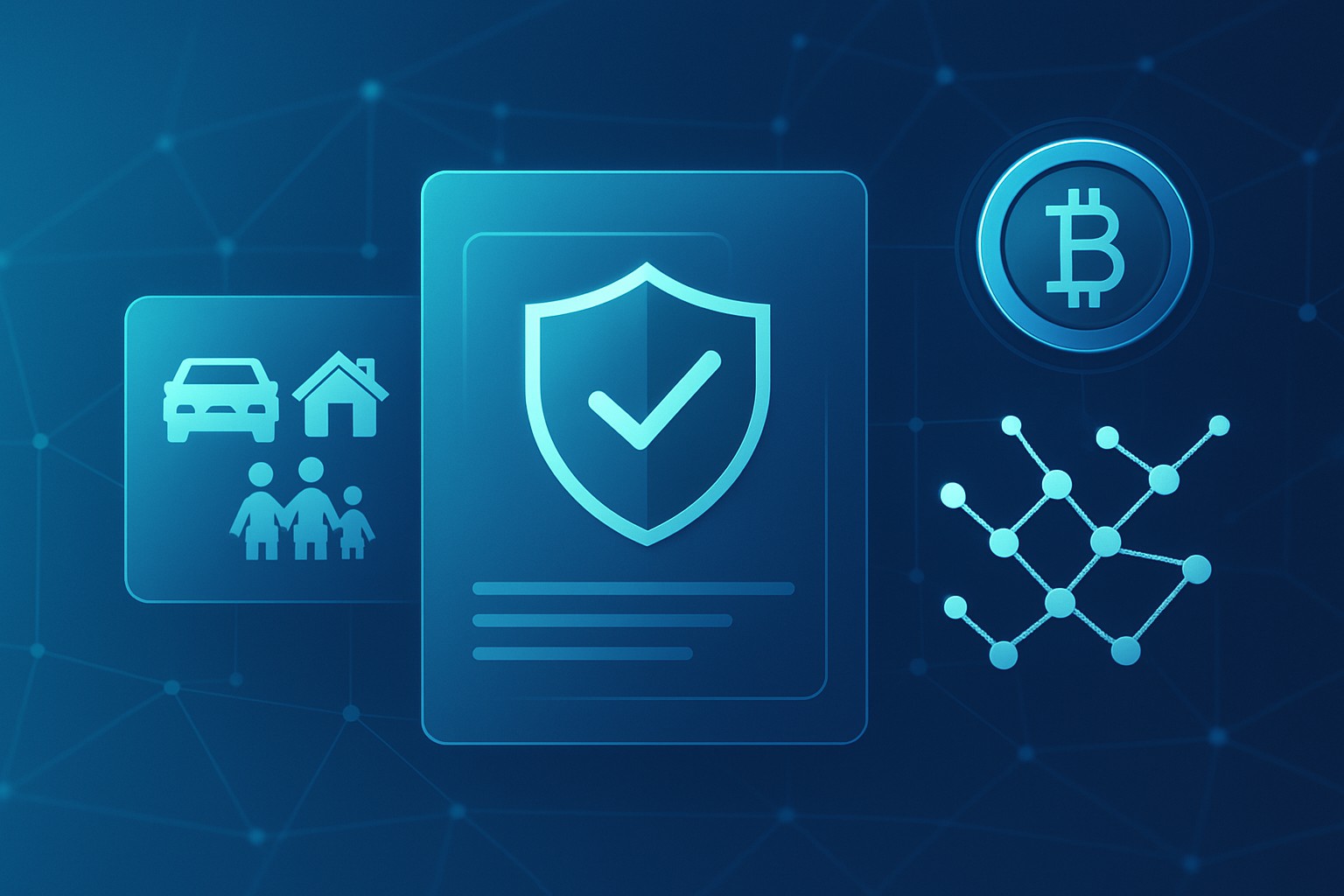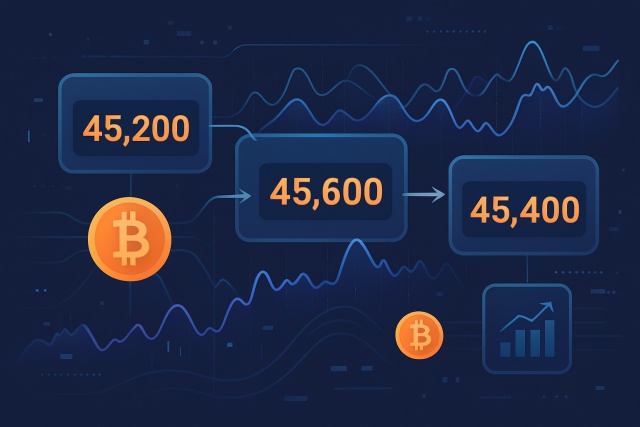Understanding DeFi Insurance Protocols in 2025


This article breaks down how DeFi insurance works, why it’s becoming a bigger deal and how you can really make it work for you in 2025.
- Discover how DeFi insurance protocols use smart contracts and risk pools to deliver automated coverage—no middlemen needed and keeping things straightforward.
- Get why the DeFi boom in 2025 makes solid insurance a must-have by offering a safety net against hacks, wild market swings and shifting regulations.
- Explore top protocols with cross-chain capabilities and community-driven governance that take transparency in claims handling to the next level.
- Follow an easy step-by-step guide to lock in decentralized insurance for your crypto stash without breaking a sweat.
DeFi insurance protocols have truly carved out a important role in the world of decentralized finance by 2025. They have stepped up to manage risks and keep users' assets safe.
So, What Exactly Are DeFi Insurance Protocols?
DeFi insurance protocols are blockchain platforms that provide decentralized and transparent protection against the usual risks lurking in decentralized finance.
- Smart contracts jump into action automatically handling policy enforcement and payouts as soon as the right conditions are met—no human intervention needed
- Risk pools bring together contributions from members to create a financial cushion that covers potential claims when they pop up
- Claim assessment systems double-check validity by blending the wisdom of the crowd with algorithms to strike a smart balance
- Decentralized governance hands the reins to token holders who vote on the big decisions that steer the protocol
- Underwriting models crunch on-chain data to set premiums and figure out who’s eligible for coverage—like the brains behind the scenes making sure it all adds up
Why DeFi Insurance Protocols Will Matter More Than Ever in 2025
DeFi adoption continues to surge in 2025. Insurance protocols step up as the unsung heroes by tackling ever-growing risks like smart contract exploits and wild market swings as well as the unpredictability of regulatory changes.
- DeFi platforms are expanding at a breakneck pace and operational risks seem to creep up alongside them
- Big-name security breaches have driven home how key reliable insurance coverage is
- Users hunt for solid safeguards to shield their decentralized assets when the market rollercoaster goes wild
- The increasing intertwining of DeFi with traditional finance adds complexity and new potential risks to watch
- Regulatory pressures are nudging protocols to improve risk management across the board
DeFi Insurance Protocols Technical and Operational Details
DeFi insurance protocols operate by pooling capital from users, offering them coverage while collecting premiums in return. When claims come in, they are reviewed through well-defined processes that often lean on automation or a bit of community oversight. Payouts roll out via smart contracts, making the whole thing surprisingly quick and dependable—no waiting around for someone to get back to you.
| Component | Function | Implementation Methods | Examples |
|---|---|---|---|
| Smart Contracts | Automatically handle policy management and payouts, taking the paperwork off your hands | Solidity code running on Ethereum and various layer-2 networks | Nexus Mutual, InsurAce |
| Risk Pools | Collect and set aside funds to make sure claim payments don’t dry up unexpectedly | Tokenized liquidity pools | Etherisc, Cover Protocol |
| Claim Assessment | Review, verify, and give the green light to claims, often with a community or AI helping out | Community voting, AI-powered tools, oracle data | Nexus Mutual DAO, Tidal |
| Decentralized Governance | Keep the wheels turning when it comes to deciding claims and updating protocols, all without a single boss in sight | DAO frameworks with token-weighted voting | DAOstack, Snapshot |
| Underwriting Models | Crunch the numbers to estimate risk and figure out fair premiums, relying on on-chain analytics | On-chain data analytics paired with oracles | Opyn, Bridge Mutual |
Smart Contracts and How Automation Works A Closer Look
Smart contracts are at the core of DeFi insurance. They clearly define coverage terms and automate everything from collecting premiums to paying claims without missing a beat. When a covered event occurs, these smart contracts activate automatically using cryptographic proof or oracle data feeds. There is no need to wait for slow paperwork. This acts as a strong defense against fraud. Thanks to this automation, transparency is not just a buzzword. Every transaction and decision is permanently recorded on-chain and allows users to review how the protocol operates at any time. The trustless nature of smart contracts eliminates middlemen, reducing costs and speeding up claim settlements compared to traditional insurance. Additionally, more advanced protocols often incorporate AI to improve claims adjudication. This makes the process smoother while maintaining clear accountability through open-source code.
Decentralized Governance and the Vital Spark of Active Community Participation
Governance in DeFi insurance protocols usually leans towards decentralization with token holders banding together to tackle vital decisions like approving claims and sizing up risks. These choices roll out through DAOs that keep things transparent and fair because no single player holds all the cards. This community involvement hands users a seat at the table, letting them actively manage risk and steer the protocol’s growth.
Leading DeFi Insurance Protocols to Keep an Eye On in 2025 With Key Features and Comparisons That Matter
By 2025, the leading DeFi insurance platforms are likely to offer a broad spectrum of coverage options that really cover their bases. You will often find features like cross-chain support tucked in, along with unique governance models that don’t just sit there—they actively shape how these platforms play their roles in the ecosystem and tackle security challenges.
| Protocol Name | Coverage Types | Supported Blockchains | Governance Model | Claim Process | Premium Structure |
|---|---|---|---|---|---|
| Nexus Mutual | Covers smart contract failures and exchange hacks, so you’re not left out in the cold | Ethereum | A DAO run by token holders, putting power in the community’s hands | Claims get a thorough once-over and a community vote—fair and square | Premiums shift depending on how risky things look |
| InsurAce | Protects against smart contract hiccups and those pesky stablecoin issues | Ethereum, BSC, Polygon | Token holders hold the reigns on governance | Claims are processed with a neat mix of automation and DAO voting | Premiums come in tiers, with some nice staking rewards thrown in |
| Etherisc | Offers crop insurance along with parametric coverages to keep things growing | Ethereum, Polygon | Community members and developers lead the charge | Claims depend on reliable oracles plus community votes—you can trust the process | Premiums are steady but may surprise you with bonuses |
| Bridge Mutual | Covers exchange hacks and keeps an eye on stablecoin risks | Ethereum, Binance Smart Chain | Governed by a DAO, so it’s a team effort | Claims get the final say through DAO voting | Pricing flexes dynamically based on risk—nothing set in stone |
| Tidal Finance | Provides multi-chain DeFi coverage to keep your bases covered | Ethereum, Avalanche, Polygon | Decisions come together through DAO consensus | Claims are reviewed with the help of AI—because sometimes robots are good teammates | Premiums are flexible and even come with some user-friendly incentives |

Advantages and Drawbacks of DeFi Insurance Protocols
Let’s dive into the ups and downs of DeFi insurance protocols. These platforms promise to shake up traditional insurance by cutting out the middlemen, but like anything shiny and new, they come with their quirks. On the bright side, they offer a level of transparency that’s hard to beat—blockchain doesn’t easily hide skeletons in the closet. Plus, the decentralized nature means no single point of failure, which sounds great until you realize that sometimes, managing those networks feels like herding cats. Still, the allure of quick, peer-to-peer coverage with fewer hoops to jump through is hard to ignore. Yet, with novel technology comes uncharted territory, and the risks—both technical and regulatory—can make you think twice. In the end, DeFi insurance could be a game changer or a wild gamble, depending on your appetite for innovation and risk.
- Transparency is a given since every transaction and claim decision gets permanently etched onto the blockchain leaving no room for hidden surprises
- Decentralization hands the reins over to users and cuts out the usual middlemen and their red tape
- Claim processing usually races ahead of traditional insurance timelines thanks to slick automation doing the heavy lifting
- If you have internet access you’re in luck—coverage is pretty much global breaking down old barriers
- Smart contracts bring a breath of fresh air and let policies flexibly adjust to fit individual needs
- That said, underwriting still trips over hurdles like scarce historical data and the tricky art of modeling risk
- Liquidity in risk pools can get a bit tight and might throw a wrench in claim payments when disaster strikes on a large scale
- And let’s not forget regulatory uncertainty lingers around casting some doubt on long-term stability and whether mass adoption will really take off
DeFi insurance protocols really seem to signal a big shift, offering users much-needed transparency and a stronger grip on control. That said, sorting out challenges like liquidity crunches and navigating the tangled web of regulations will undoubtedly be key for lasting success. – Dr. Elena Ramirez, Blockchain Risk Analyst
A Handy Step-by-Step Guide to Navigating DeFi Insurance Protocols
Users diving into decentralized insurance typically start by setting up wallets compatible with the system. Then they choose protocols that fit their risk appetite, pay their premiums using cryptocurrency, and join governance decisions.
Take some time to explore different DeFi insurance protocols focusing on the types of coverage they provide and their overall reputation because not all that glitters is gold.
Connect a supported crypto wallet such as MetaMask or WalletConnect to the insurance platform. Think of it as plugging in your digital lifeline.
Spend a moment evaluating your own risk exposure. This step is important to picking the right level of policy coverage so you won’t be wide open or over-insured.
Purchase the insurance policy by depositing the required premiums in the tokens they support. It is easy but don’t forget to double-check the amounts.
Keep a watchful eye on the risk pools and stay informed about any updates to the protocol because these changes can sneak up on you.
When it comes time to file a claim just do it through the platform’s interface and be ready to provide the necessary evidence. It might not be fun but it’s straightforward if you’re prepared.
Don’t shy away from governance. If you’re eligible, jump in to vote on claims and share your ideas for improving the protocol. It’s your chance to help steer the ship.
Emerging Trends and New Developments Shaping the Future of DeFi Insurance Protocols
Innovations like AI-driven underwriting and cross-chain insurance coverage are shaking up the DeFi insurance scene. Parametric insurance models also play a key role.
- Integration with DeFi lending platforms to roll out bundled financial protection products that fit like a glove
- AI-driven risk modeling that sharpens premium accuracy and reduces fraud
- Solutions crafted to tick all the regulatory boxes and give institutional players a nudge to get more involved
- Broadening the coverage umbrella to include new and wider asset classes like NFTs and tangible real-world assets
- Building DAO governance structures designed to speed up decision-making and scale smoothly because slow and steady doesn’t always win the race
Common Challenges and How to Tackle Them Head-On
Even as they continue to grow DeFi insurance protocols tend to hit familiar roadblocks like scalability hiccups and fraudulent claims. Disputes can really test the patience of their communities. Dealing with these challenges usually calls for technical upgrades, tightening verification processes and keeping governance clear
- Roll out improved oracle services that deliver trustworthy tamper-resistant external data feeds you can count on
- Use multi-party verification to help cut down on fraudulent claims and honest mistakes because nobody likes surprises
- Broaden insurance pools to spread risk evenly and keep liquidity flowing smoothly even when the unexpected pops up
- Encourage active community governance to tackle disputes head-on and keep protocols up-to-date without delays
- Keep enhancing transparency with crystal-clear protocols and regular audit reports that leave no room for doubt
Frequently Asked Questions
How do DeFi insurance protocols verify claims without traditional intermediaries?
Claims get verified through smart contract automation, oracle data feeds and decentralized governance. Community members or algorithms review claims based on predefined rules. Any disputes get hashed out through on-chain voting. This setup sidesteps usual centralized middlemen, keeping everything transparent and hopefully fair for everyone involved.
What risks are typically covered by DeFi insurance protocols in 2025?
Most protocols cover smart contract exploits, hacks and system-wide failures. Some also cover market volatility, stablecoin depegging or validator slashing. Coverage varies by platform so it is a good idea to dig into policy details—especially now that cross-chain bridge failures or AI-driven exploits are creeping into the picture.
Are DeFi insurance premiums more expensive than traditional insurance?
Premium costs depend largely on risk and how the protocol’s built. Automation tends to keep prices competitive by slashing overhead. Niche risks or pools with low liquidity can still push premiums higher than you would like. Dynamic pricing models that tap into on-chain data usually offer rates more finely tuned than old-school traditional underwriting methods.
Can I insure assets across multiple blockchains with one protocol?
Top protocols in 2025 often provide cross-chain coverage through interoperability solutions. Ideally, pick platforms that support your asset’s native chain or use wrapped token bridges. Make sure to double-check that payout processes work smoothly across different chains before you commit—it saves a headache down the line.
What happens if a DeFi insurance protocol’s risk pool runs out of funds?
Usually, protocols tackle this with diversified pools, reinsurance arrangements or partial payouts when the going gets tough. Some have 'capital call' mechanisms where members chip in extra funds to keep things afloat. A smart move is to review a protocol’s solvency safeguards and past payout history before diving in—better safe than sorry.
How can I participate in governing a DeFi insurance protocol?
Jump in by holding the protocol’s governance tokens and casting your vote on proposals via its DAO. Active participants often snag rewards along the way. A good place to start is by joining community forums, checking previous voting records and staking your tokens to have real sway over claim handling or parameter tweaks.






